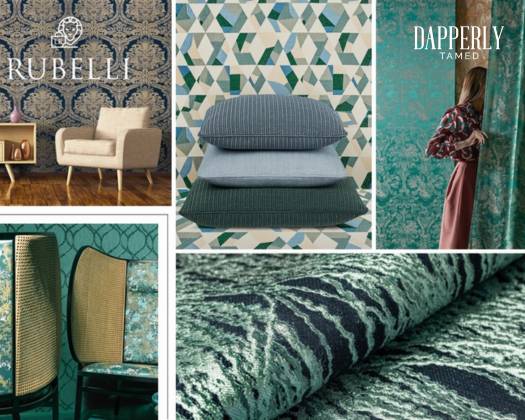Rubelli: Weaving Tradition into Contemporary Design
Nestled in the heart of Venice, the illustrious Italian textile house Rubelli stands as a testament to timeless artistry and innovative design. Established in 1889 by Lorenzo Rubelli, this iconic brand's journey began amidst the opulent backdrop of 18th-century Italy, where the lavish French Rococo style cast its spell over the cultural milieu.
Artistic Roots in Venetian Opulence
Venice, a once-vibrant hub of commerce and culture, wove its opulent legacy into Rubelli's fabric. Through Rococo's exuberance, Venetians celebrated artistry despite economic downturns. Elaborate commodes painted with scenes reminiscent of masterpieces and Murano-crafted chandeliers illuminated the city's penchant for flamboyance.
Rubelli, in partnership with Tessitura Luigi Bevilacqua, continues this opulent legacy, crafting high-end textiles that evoke the sumptuousness of eras past while embracing contemporary nuances.
The Intersection of Tradition and Modernity
Venice, a city steeped in tradition, also birthed avant-garde movements. Rubelli's textiles beautifully straddle this intersection, paying homage to Venice's aquatic presence while supporting local culture through partnerships like the Peggy Guggenheim Collection sponsorship.
The brand's commitment to restoration extends beyond cultural venues like Teatro La Fenice and La Scala. Their swift response after the 1996 fire at Teatro La Fenice, providing fire-retardant fabrics referencing their archive, underscores their dedication to preservation.
Collaborative Innovations
Rubelli's enduring allure lies in its collaborations. From architectural icons like Peter Marino to the prodigious talent of Luke Edward Hall, these partnerships infuse the brand's fabrics with a contemporary narrative. Marino's "Venetian Heritage" collection not only captures the city's luminosity but also funds art restoration—a harmonious blend of commerce and cultural stewardship.
The Pila 47 chair, born from collaboration, epitomizes Rubelli's commitment to nurturing homegrown talent, marrying innovative design with functionality.
Evolution and Revivals
Throughout its evolution, Rubelli's trajectory shifted from reinterpreting antique silk fabrics to embracing modernity. Embracing Liberty style and subsequently Art Deco, collaborations with visionaries like Gio Ponti marked pivotal moments, producing enduring designs like the Rattoppato velvet jacquard fabric.
With Alessandro Rubelli's transformational leadership in the 1950s, the brand expanded globally, adorning Grace Kelly's handbag and diversifying into international markets.
Maximalist Visionaries
Under Nicolò Rubelli's stewardship, the brand continues its maximalist legacy, celebrating silk-weaving and Venice's rich heritage. From theatrical installations mirroring Venice's lagoon to collaborations with designers like Luca Nichetto, Rubelli maintains its position at the forefront of design innovation.
Looking Ahead
Rubelli's commercial acumen balances creativity and market sensibilities. While maintaining discipline in production, the brand fosters experimentation and creative freedom, paving the way for sumptuous, modern fabrics that redefine luxury.
In essence, Rubelli embodies a narrative woven with threads of history, tradition, and boundless creativity—a timeless testament to the enduring allure of Venetian craftsmanship meeting contemporary design.









